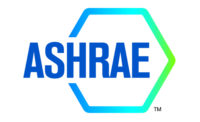Taking specific actions, such as sealing off outdoor air intakes, without seeking professional advice can cause serious problems and exposure to liability, Coad said. To clear up misconceptions and misinformation, ASHRAE will offer professional guidance on maintaining safe, healthy and comfortable indoor environments at the public session held at the 2002 Winter Meeting in Atlantic City, NJ.
"The Aftermath of 9/11/01: Ensuring the Safety of America's Buildings" will feature a report on the work of ASHRAE's Presidential Study Group on Health and Safety Under Extraordinary Incidents. This group, chaired by James E. Woods, Ph.D., P.E., chairman of ASHRAE's Environmental Health Committee, consists of a blue-ribbon panel of recognized experts in the fields of technology related to this topic. The session will take place from 3-5 p.m. Monday, Jan. 14, in room 302 at the Atlantic City Convention Center. Admission is free.
"ASHRAE's mission calls for us to be the foremost, authoritative, timely and responsive source of technical information," Coad said. "Much of our technology and knowledge developed for improved indoor air quality and fire safety can be applied to protecting building environments."
Scheduled speakers include Woods and other members of the study group whose expertise is reflected in the report. The speakers are expected to address all aspects of health and safety, except structural integrity and security protection. These include materials, egress, chemical, biological and radiological protection, fire extinguishing, smoke removal or purging, filtration, maintenance of comfort and air quality, entrance paths for contaminants, building envelopes, water supplies and electrical reliability.




